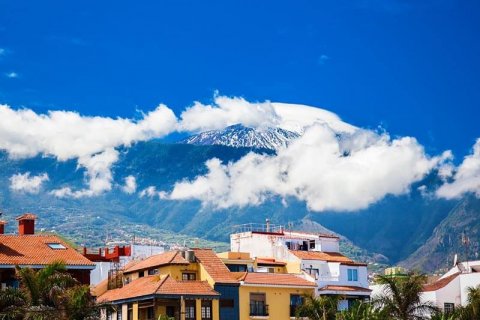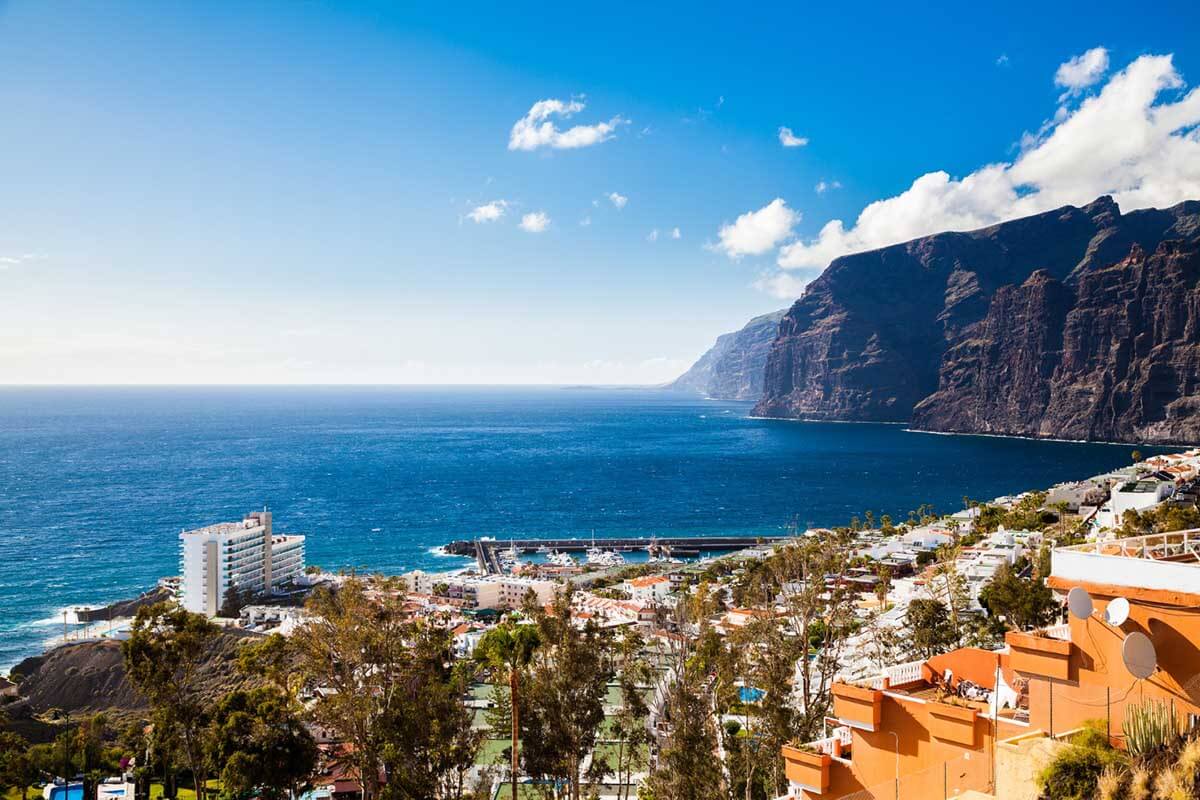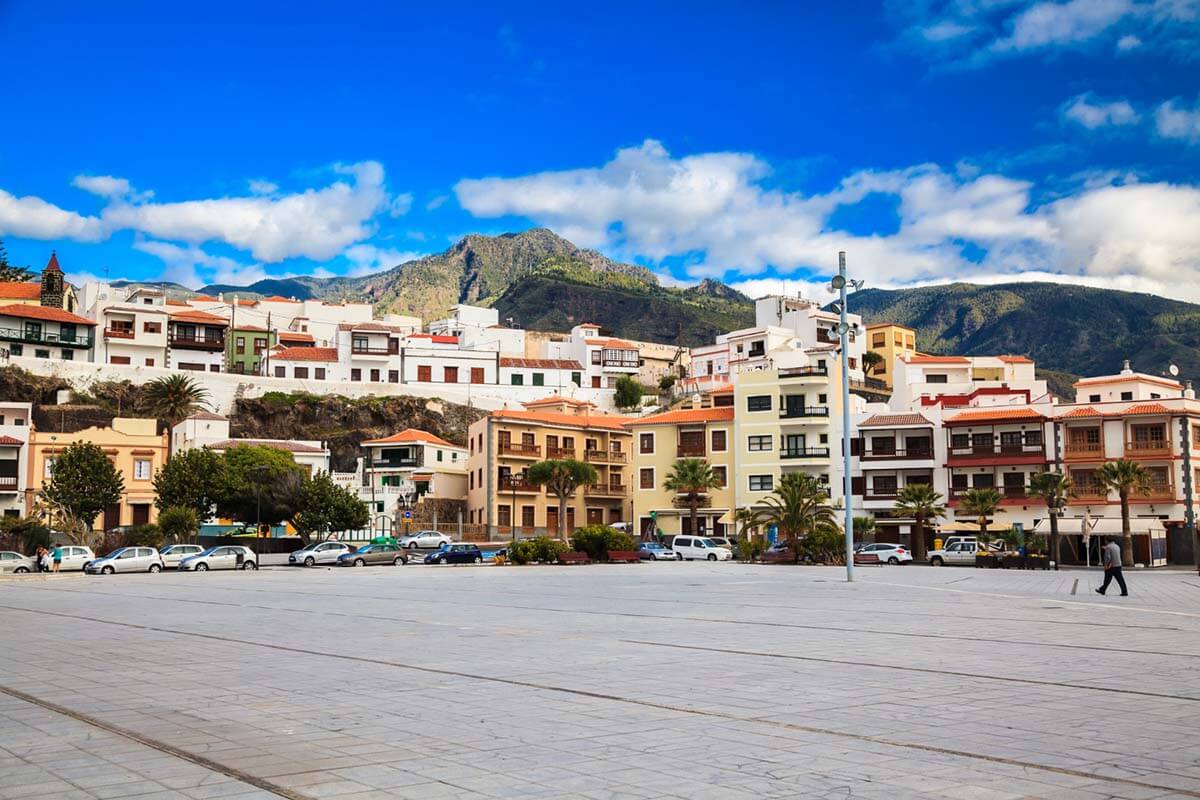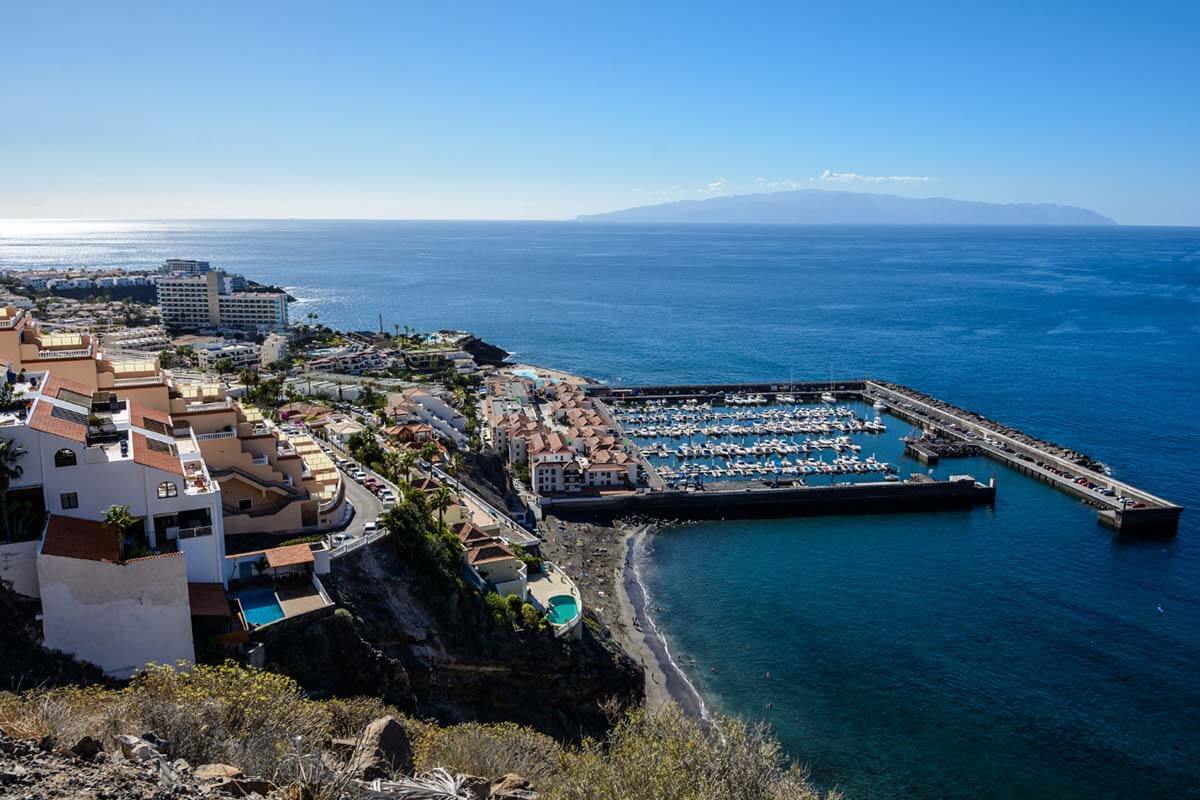
Buying real estate often comes with the question about what’s more profitable — secondary or newly built homes? Many things affect people’s choices like everyday circumstances, needs, budget, and likes and dislikes. Let's discuss the pros and cons of modern and resale real estate.
Content:
- Primary and secondary housing markets in Spain
- The main thing when choosing a home
- Your budget
- Prices of new and resale properties in Spain, February 2022
- Housing location
- Extra expenses for home renovations in Spain
- Extra registration costs
- Taxes when buying a new property in Spain in 2022 (%)
- Taxes when buying second homes in Spain in 2022 (%)
- Mortgage registration
- Why are Spanish new buildings better than resale ones?
- What you should consider when you buy a newly built home?
- When you don’t have a choice: what’s great about secondary real estate in Spain?
- What you should consider when you buy a second home?
- So, which property to choose: a primary one or a secondary one?
- We’ll help you buy property in Spain
Primary and secondary housing markets in Spain
Statistics say that in January 2022, 9,992 first-hand and 42,692 secondhand homes were sold in Spain. As we can see, there were more transactions in the secondary market. This is because there’s more supply than the primary market. Since 2007, the Spanish construction boom meant about 600,000 new units were built a year. This is way more than Germany, Italy, France, and Great Britain together. Later, there was a crisis that worsened because of the pandemic. In 2021, only 105,000 units were built in the country.
Even though the cost of materials and labor continues to rise, the demand for new also continues to grow in 2022. A recent survey shows that customers say the lack of renovation work (44%), good quality of construction (33%), responsive housing to modern needs (32%), energy efficiency (29%), and a developed service system (27% ) are the main reasons they choose a new build home.

The main thing when choosing a home
It’s necessary to look at some important things before you decide to buy a particular unit.
Your budget
In Spain, most properties are bought with a mortgage. In January 2022, this rate reached 33,917 units or 64.4% of the total number of transactions in the country. Spanish banks finance up to 80% of a home’s cost. Mortgage funding for non-residents is usually 60%-70%. So, a future owner should have at least 20% of the total property price on hand and another 10%-15% of the price for all expenses connected with the transaction.
Experts say you shouldn’t spend more than 30% of your net monthly income on mortgage payments. If you have 2 loans at the same time, the total share of household expenses can be as high as 35%.
For example, someone with a monthly salary of €1,800 (¥12,591) can spend up to €540 (¥3,777) on a mortgage. If you have other loans, the maximum payment should be €630 (¥4407) a month.
Prices of new and resale properties in Spain, February 2022
| Autonomous community | Firsthand housing prices per 1 m² (€ / ¥) | Secondhand housing prices per 1 m² (€ / ¥) |
|---|---|---|
| Andalusia | 1794 / 12 549 | 1754 /12 270 |
| Aragon | 1919 / 13 424 | 1303 / 9115 |
| Asturias | 1643 / 11 493 | 1347 / 9423 |
| The Balearic Islands | 3351 / 23 441 | 2251 / 15 746 |
| The Valencian Community | 1769 / 12 375 | 1488 / 10 409 |
| Galicia | 1670 / 11 682 | 1330 / 9304 |
| The Canary Islands | 1959 / 13 704 | 1640 / 11 472 |
| Cantabria | 1943 / 13 592 | 1475 / 10 318 |
| Castilla–La Mancha | 1470 / 10 283 | 866 / 6058 |
| Castile and León | 1669 / 11 675 | 1144 / 8003 |
| Catalonia | 4104 / 28 708 | 2300 / 16 089 |
| La Rioja | 1485 / 10 388 | 1279/8947 |
| Madrid | 3802 / 26 596 | 2983 / 20 867 |
| Murcia | 1299 / 9087 | 1068 / 7471 |
| the Chartered Community of Navarre | 1965 / 13 746 | 1442 / 10 087 |
| The Basque Country | 2831 / 19 804 | 2694 / 18 845 |
| Extremadura | 1229 / 8597 | 931 / 6513 |
As we can see above, new apartments in Spain have a higher price than resale ones even if they’re in the same neighborhood.
Housing location
The location of a property in Spain is one of the most important factors affecting realty prices.
Homes are usually more expensive in the city center. Keep in mind that new apartments in Spain are usually outside central areas. This is accepted as a con by people who want to live close to major cities or city centers. But, in 2020 and 2021, because of the pandemic and remote work development, the demand for outlying houses with more space and green areas grew a lot.
Also keep in mind the infrastructure (schools, supermarkets, pharmacies, etc.) and check out the possible long-term revaluation.
Extra expenses for home renovations in Spain
Buying a second home can mean doing some renovations.
The average cost of renovating an apartment varies a lot and depends on the apartment’s size and condition. A small apartment of about 70 m2 can cost from €25,000 (¥174,881) to €50,000 (¥349,762) for a full renovation.
Cost of things for an apartment of 70 m2 renovation:
- permits and licenses - about €3,000 (¥20,986);
- dismantlement - removing lining, flooring, and joinery as well as demolishing partition walls can cost about €3,000 (¥20,986);
- installing walls, floors, and ceilings (including screed, wall cladding, finishing, wall and suspended ceiling installation, etc.) may exceed €9,000 (¥62,957) depending on the amount of work needed;
- repairing the heating system and plumbing - depending on the model, replacing radiators and boilers can cost €4,000 (¥27,981) and plumbing repairs will typically cost around €3,000 (¥20,986);
- repairing electrical installation and lighting - the cost will depend on the number of light points and the quality of materials from €2,500 (¥17,488) to €4,000 (¥27,981);
- repairing cladding and flooring - the quality of materials determines the costs of €5,000 (¥34,976) on average;
- outside and inside doors and windows (including repairing or replacing walk-through, entering and wardrobe doors, windows or doors to terraces or utility rooms) - quality and material have a significant impact on expenses, which can reach €8,000 (¥55,962) and more;
- furniture and appliances - good furniture for a kitchen with an area of 8 m2 will cost about €4,500 (¥31,479) and basic appliances about €1,500 (¥10,493);
- plumbing - a major renovation of a small bathroom with an area of about 5 m2 will cost from €1,500 (¥10,493) and includes furniture and faucets.
Extra registration costs
Expenses that come with signing the sales contract
Notary
Prices start from €600 to €875 (from ¥4197 to ¥6121) depending on the home price. For example, you’ll pay around €850 (¥5,946) for a €100,000 (¥699,524) apartment and around €1,000 (¥6,995) for a €250,000 (¥1,748,809) apartment.
Property registration
To register notarized documents, you’ll have to pay around €400 to €650 (around ¥2798 to ¥4547) depending on the realty price.
Taxes
A new building is subject to a Value-Added Tax (IVA) of 10% (except for the Canary Islands, where the General Indirect Canarian Tax (IGIC) is 6.5%) and Stamp Duty (IAJD). This varies from 0.5% to 1.5% depending on the autonomous community where the unit is.

Taxes when buying a new property in Spain in 2022 (%)
| Autonomous community | Stamp Duty (IAJD) | Value-Added Tax - VAT (IVA) |
|---|---|---|
| Andalusia | 1,2 | 10,0 |
| Aragon | 1,5 | 10,0 |
| Asturias | 1,2 | 10,0 |
| The Balearic Islands | 1,2 | 10,0 |
| The Valencian Community | 1,5 | 10,0 |
| Galicia | 1,5 | 10,0 |
| The Canary Islands | 0,4 | 6,5 |
| Cantabria | 1,5 | 10,0 |
| Castilla–La Mancha | 1,5 | 10,0 |
| Castile and León | 1,5 | 10,0 |
| Catalonia | 1,5 | 10,0 |
| La Rioja | 1,0 | 10,0 |
| Madrid | 0,7 | 10,0 |
| Melilla | 0,5 | 10,0 |
| Murcia | 1,5 | 10,0 |
| The Chartered Community of Navarre | 0,5 | 10,0 |
| Ceuta | 0,5 | 10,0 |
| The Basque Country | 0,0 | 10,0 |
| Extremadura | 1,5 | 10,0 |
Resale properties have a Property Transfer Tax (ITP), which also depends on the autonomous community and can be from 6% to 10%.
Taxes when buying second homes in Spain in 2022 (%)
| Autonomous community | Property Transfer Tax (ITP) |
|---|---|
| Andalusia | 7,0 |
| Aragon | 8,0 |
| Asturias | 8,0 |
| The Balearic Islands | 8,0 |
| The Valencian Community | 10,0 |
| Galicia | 10,0 |
| The Canary Islands | 6,5 |
| Cantabria | 10,0 |
| Castilla–La Mancha | 9,0 |
| Castile and León | 8,0 |
| Catalonia | 10,0 |
| La Rioja | 7,0 |
| Madrid | 6,0 |
| Melilla | 6,0 |
| Murcia | 8,0 |
| The Chartered Community of Navarre | 6,0 |
| Ceuta | 6,0 |
| The Basque Country | 4,0 |
| Extremadura | 8,0 |
So, new property taxes are higher compared to resale ones. For utility expenses, many new buildings, unlike resale ones, come with a wide range of extra services that lead to high utility costs.
Mortgage registration
Mortgage-related expenses include real estate appraisal, registration, notary fees, and stamp duty (IAJD).
Real estate appraisal
If the buyer is going to apply for a mortgage, they should first assess the property. In 2022 in Spain, appraisals cost from €250 to €600 (¥1749 to ¥4197) depending on the company that does it. This document expires 6 months from when it’s issued.
Since the recent Mortgage Law in June 2019, banks oversee notary expenses, real estate registration, and stamp duty (AJD).
Why are Spanish new buildings better than resale ones?
The secondary housing market is highly developed in many cities but there are disadvantages sometimes like old floors, high prices per square meter, poor insulation, etc. These things mean buyers choose other types of real estate.
Today, these advantages of modern houses are important to remember:
-
Comfort from high-quality materials and insulation.
The construction materials are getting better and better especially for insulation. While resale properties usually have outdated cladding, new homes in Spain are more energy efficient.
- No repairs needed. Repair work can be difficult and time-consuming. With secondary housing, you have to check work licenses, the quality of materials, finishing, painting, and the construction company’s work. That’s why many people prefer to save time and choose a newly built unit.
- Move-in quickly. After getting the keys and notarized documents, you can move into your freshly built house immediately.
- Flexible payment system. When you buy an off-plan home, you can get funding during the entire construction period. Also, buying in a new building means easily getting installment plans and quotas.
What you should consider when you buy a newly built home?
It’s important to consider the following thing before you make your final purchase decision.
- Know the construction terms and developer’s reputation. You need to find information about the construction company, look at reviews and find out if the project has all construction licenses.
- The contract should clearly state the location of the building, materials, payment plan, etc.
- You should request all the information about the real estate unit and the construction project.
- You should ask the developer for a guarantee for real estate payment insurance. There’s the Building Management Law 38/1999 of November 5, 1999. It obliges real estate developers to insure only the money received from the moment they get the construction license. So, the developer’s surety commitment will help secure the funds invested earlier.
- Any homeowner has the right to claim damages from the real estate developer in court.
- The insurance against structural damage is valid for not less than 10 years.
When you don’t have a choice: what’s great about secondary real estate in Spain?
The vast majority of real estate belongs to the secondary housing market.
These houses are usually in the central areas of the city and are most often sold at more competitive prices than new buildings.
The advantages of a secondhand home
- The purchase price will be much cheaper than for newly built units (savings are from 20% to 30%). Recent studies show that the cost of resale homes after renovation can increase by 30%.
- After renovation, the home will fully suit the tastes and needs of the buyer.
- Convenient location in the central city.
- Choose from a wide range. Demand is lower and supply is higher than in the primary sector.
What you should consider when you buy a second home?
- Technical condition of the building. It’s important to hire a specialist to check things like the humidity, downspouts, and general structure. All this information about the home’s condition is crucial.
- Renovation. Even though an advantage of a second home is the price, you need to keep in mind that renovations are very costly.
- Needing to find alternative living arrangements during a phase of renovation. Another aspect to consider is that you’ll have to look for other accommodation during the renovation. It can mean extra expenses.
So, which property to choose: a primary one or a secondary one?
| Housing type | Advantages | Disadvantages | Aspects to consider before you purchase |
|---|---|---|---|
| New housing |
Enhanced comfort Fast accommodation Savings on rent Various funding opportunities |
Price Location (mostly on the periphery) Taxation and utility expenses |
Construction period, real estate developer’s reputation Studying the contract Requesting real estate documentation Insurance payments Repairs |
| Secondhand housing |
More affordable price Revaluation up to 30% Convenient location Huge variety Highly suits customer needs |
Time investments Difficult renovation because of architectural value of the housing unit Possible structural defects Be careful with architectural value Potential construction problems |
Renovation time and expenses Need to rent accommodation during a phase of repair |
Which is better: a new building or a second home?
Both options have their advantages and disadvantages.
In many cases, the decision will depend on your circumstances and preferences.
If a buyer looks for a comfortable home to move into immediately then, most likely, They’ll choose a new building.
If the budget is limited and the buyer wants to find a home that suits their personal tastes and is conveniently located, then the resale housing unit is the right pick.
Studying your financial capabilities, the real estate market, the condition of the property, possible expenses, location, infrastructure, the terms of the contract and lending will help you make the right choice. Visiting the selected housing unit won’t hurt either.

We’ll help you buy property in Spain
If you have questions about choosing a property, please contact Spain.Real-Estate. The catalog has a range of offers for primary and secondary properties in Spain. Specialists are always in touch and ready to assist you.
